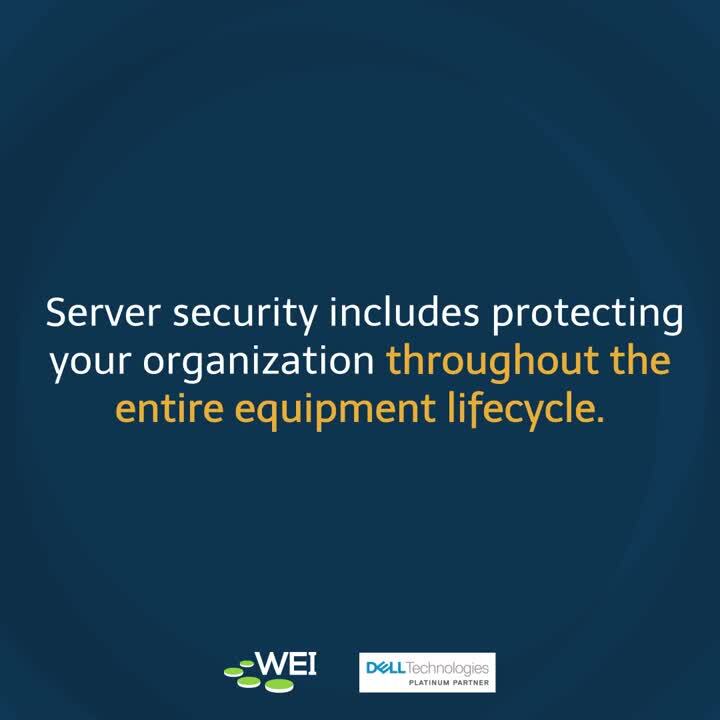 The enterprise cybersecurity landscape is currently undergoing a significant transformation. Server platforms are evolving into complex ecosystems with numerous components relying on firmware for configuration and orchestration. This complexity is further compounded by the exponential growth in data generation, both in speed and volume, which is often geographically dispersed, creating additional challenges for management and security.
The enterprise cybersecurity landscape is currently undergoing a significant transformation. Server platforms are evolving into complex ecosystems with numerous components relying on firmware for configuration and orchestration. This complexity is further compounded by the exponential growth in data generation, both in speed and volume, which is often geographically dispersed, creating additional challenges for management and security.
The expanding attack surface resulting from these digital transformation efforts has elevated data privacy and cybersecurity in companies to the forefront of concerns. IT professionals now face the critical challenge of implementing robust security controls to effectively manage these risks.
To address this challenge, let’s explore a five-stage approach rooted in zero-trust principles. This framework ensures comprehensive data protection across the entire server lifecycle.
Maintaining A Secure Environment
Understanding the five stages of the server lifecycle is crucial for implementing comprehensive security measures that adapt to the growing threat landscape.
Stage 1: Prioritizing Security From The Start
The foundation of a secure server environment begins with the selection process. Incorporating cybersecurity technologies from the initial design phase ensures that security measures are baked into the architecture rather than added later.
For instance, Dell PowerEdge servers incorporate security features like SecureBoot and System Guard, which act as the first line of defense. These solidify the server’s security posture by reducing the attack surface and mitigating potential vulnerabilities, preventing unauthorized modifications to the server’s core firmware and boot process.
Stage 2: Configuring With Zero-Trust In Mind
After server selection, the focus shifts to secure configuration. Zero-trust principles align perfectly with this approach. This can be implemented by enforcing granular access controls, such as:
- Role-based access control (RBAC) restricts access only to authorized personnel and minimize potential damage if a breach occurs.
- Layered authentication through strong password policies and multi-factor authentication (MFA). MFA adds a layer of verification, ensuring that even if a password is compromised, only authorized users can access sensitive data.
Once the server design is finalized, the next stage integrates security measures directly into the server’s firmware and software stack. Dell PowerEdge servers offer comprehensive features that enhance overall security:
- Hardware-Based Security: PowerEdge servers leverage silicon-based security features to shield against firmware attacks. This hardware-level protection adds a significant layer of defense to the server's core functionality.
- Secure Firmware Updates: Secure firmware update protocols and cryptographically signed firmware ensure the authenticity and integrity of any updates applied.
These measures are critical for maintaining the server’s integrity throughout its lifecycle – from development to deployment.
Stage 3: Maintaining Vigilance During Deployment
The deployment phase presents a unique enterprise cybersecurity challenge. While establishing the initial environment, it’s crucial to prioritize ongoing vigilance to mitigate potential risks.
When looking for cybersecurity technologies to enhance your infrastructure, consider looking for solutions that come with an Integrated Dell Remote Access Controller (iDRAC) for continuous system health monitoring. This proactive approach empowers IT professionals to identify and address security concerns before they escalate. Furthermore, a comprehensive vulnerability management program with routine scans and patching remains a cornerstone of a robust cybersecurity posture. By consistently patching vulnerabilities, organizations stay ahead of evolving cyber threats and ensure a secure foundation for their IT infrastructure.
Stage 4: Continuous Monitoring And Mitigation
Traditional manual monitoring methods are insufficient in today’s landscape. Here’s how a proactive approach can streamline security management and empower your team to stay ahead of evolving threats:
- Enhanced Visibility And Response: As server operations progress, SIEM solutions provide security teams with a comprehensive view of system activity. This allows for in-depth analysis to identify anomalous behavior and swift response to potential security incidents. Additionally, real-time telemetry and user behavior monitoring can be valuable in detecting compromised accounts by flagging unusual activity patterns.
- Streamlined Maintenance And Threat Defense: Modern server architectures, like Dell PowerEdge, incorporate zero-trust principles by automating security updates and patch management. This ensures systems are always running the latest, most secure software, significantly reducing the attack surface for potential threats. They also offer advanced threat detection and response capabilities, enabling proactive mitigation and a faster time to resolution.
This combined approach empowers organizations to gain a comprehensive view of their servers, automate security processes, and proactively address threats that will strengthen their overall enterprise cybersecurity posture.
Stage 5: Ensuring Secure Decommissioning
Data breaches can occur even from seemingly harmless sources like retired hardware. When it comes to cybersecurity in companies handling various amounts of data, secure server decommissioning is a critical but often overlooked step. One solution that is equipped with advanced removal functionalities is Dell PowerEdge servers.
How does this service ensure sensitive information is permanently removed from storage devices? Dell’s Secure Erase operates on zero-trust and complements your organization’s existing cybersecurity technologies. This feature permanently removes data to ensure even physically disposed drives remain inaccessible. This eliminates a potential vulnerability within your IT infrastructure and simplifies compliance with data security regulations.
Final Thoughts
In today’s dynamic threat landscape, enterprise cybersecurity demands a flexible approach rooted in best practices like server lifecycle stages. Partnering with cybersecurity specialists can further enhance your organization’s security posture.
WEI’s cybersecurity specialists offer unparalleled expertise to design and implement a zero-trust strategy in your organization. This strategy can adapt to emerging threats and new business requirements by building on the strengths of Dell PowerEdge servers’ security features and scalability, fostering an agile server environment. Contact us today to discuss how zero trust can empower your organization.
Next Steps: As a longtime partner, WEI knows that Dell Technologies follows an intrinsic approach to cybersecurity. Security is integrated, not bolted-on after the fact, and it is integrated into every step of Dell PowerEdge. Learn how Dell PowerEdge servers follow this strategy and mindset in this short video.














